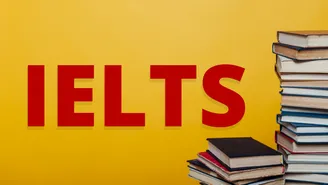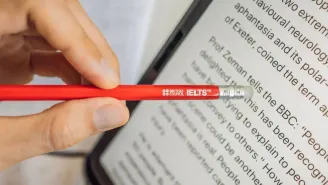The Innovation of Grocery Stores IELTS Reading Passage
The Innovation of Grocery Stores Reading Passage
Paragraph A: At the beginning of the 20th century, grocery stores in the United States were full-service. A customer would ask a clerk behind the counter for specific items, and the clerk would package the items, which were limited to dry goods. If they want to save some time, they have to ask a delivery boy or themselves to send the note of what they want to buy to the grocery store first and then go to pay for the goods later. These grocery stores usually carried only one brand of each good. There were early chain stores, such as the A&P Stores, but these were all entirely full-service and very time-consuming.
Paragraph B: In 1885, a Virginia boy named Clarence Saunders began working part-time as a clerk in a grocery store when he was 14 years old and quit school when the shopkeeper offered him full-time work with room and board. Later he worked in an Alabama coke plant and a Tennessee sawmill before he returned to the grocery business. By 1900, when he was nineteen years old, he was earning $30 a month as a salesman for a wholesale grocer. During his years working in grocery stores, he found that it was very inconvenient and inefficient for people to buy things because more than a century ago, long before there were computers, shopping was done quite differently than it is today. Entering a store, the customer would approach the counter (or wait for a clerk to become available) and place an order, either verbally or, as was often the case for boys running errands, in the form of a note or list. While the customer waited, the clerk would more behind the counter and throughout the store, select the items on the list – some form shelves so high that a long-handled grasping device had to be used – and bring them back to the counter to be tallied and bagged or boxed. The process might be expedited by the customer calling or sending in the order beforehand or by the order being handled by a delivery boy on a bike, but otherwise, it did not vary greatly. Saunders, a flamboyant and innovative man, noticed that this method resulted in wasted time and expense, so he came up with an unheard-of solution that would revolutionise the entire grocery industry: he developed a way for shoppers to serve themselves.
Paragraph C: So in 1902, he moved to Memphis, where he developed his concept to form a grocery wholesale cooperative and a full-service grocery store. For his new “cafeteria grocery”, Saunders divided his grocery into three distinct areas: 1) A front “lobby” forming an entrance and exit and checkouts at the front. 2) A sales department, which was specially designed to allow customers to roam the aisles and select their groceries. Removing unnecessary clerks, creating elaborate aisle displays, and rearranging the store to force customers to view all of the merchandise and over the shelving and cabinets units of the sales department were “galleries” where supervisors were allowed to keep an eye on the customers while not disturbing them. 3) Another section of his store was the room only allowed for the clerks, which was called the “stockroom” or “storage room,” where large refrigerators were situated to keep fresh products from being perishable. The new format allowed multiple customers to shop at the same time and led to the previously unknown phenomenon of impulse shopping. Though this format of the grocery market was drastically different from its competitors, the style became the standard for the modern grocery store and later supermarket.
Paragraph D: On September 6, 1916, Saunders launched the self-service revolution in the USA by opening the first self-service Piggly Wiggly store at 79 Jefferson Street in Memphis, Tennessee, with its characteristic turnstile at the entrance. Customers paid cash and selected their goods from the shelves. It was unlike any other grocery store of that time. Inside a Piggly Wiggly, shoppers were not at the mercy of shop clerks. They were free to roam the store, check out the merchandise and get what they needed with their own two hands and feet. Prices on items at Piggly Wiggly were marked. No one pressured customers to buy milk or pickles. And the biggest benefit at the Piggly Wiggly was that shoppers saved money. Self-service was positive all around. “It’s good for both the consumer and retailer because it cuts costs,” noted George T. Haley, a professor at the University of New Haven and director of the Center for International Industry Competitiveness. “If you looked at the way grocery stores were run previous to Piggly Wiggly and Alpha Beta, what you find is that there was a tremendous amount of labour involved, and labour is a major expense.” Piggly Wiggly cut the fat.
Paragraph E: Piggly Wiggly and the self-service concept took off. Saunders opened nine stores in the Memphis area within the first year of business. Consumers embraced the efficiency, the simplicity and, most of all, the lower food prices. Saunders soon patented his self-service concept and began franchising Piggly Wiggly stores. Thanks to the benefits of self-service and franchising, Piggly Wiggly ballooned to nearly 1,300 stores by 1923. Piggly Wiggle sold $100 million – worth $1.3 billion today – in groceries, making it the third-biggest grocery retailer in the nation. The company’s stock was even listed on the New York Stock Exchange, doubling from late 1922 to March 1923. Saunders had his hands all over Piggly Wiggly. He was instrumental in the design and layout of his stores. He even invented the turnstile.
Paragraph F: However, Saunders was forced into bankruptcy in 1923 after a dramatic spat with the New York Stock Exchange, and he went on to create the “Clarence Saunders sole-owner-of-my-name” chain, which went into bankruptcy.
Paragraph G: Until the time of his death in October 1953, Saunders was developing plans for another automatic store system called the Foodelectric. But the store, which was to be located two blocks from the first Piggly Wiggly store, never opened. But his name was well-remembered along with the name Piggly Wiggly.
Also Read: IELTS Pattern and Format
The Innovation of Grocery Stores Questions and Answers
Discover exciting and informative IELTS reading answers about The Innovation of Grocery Stores






